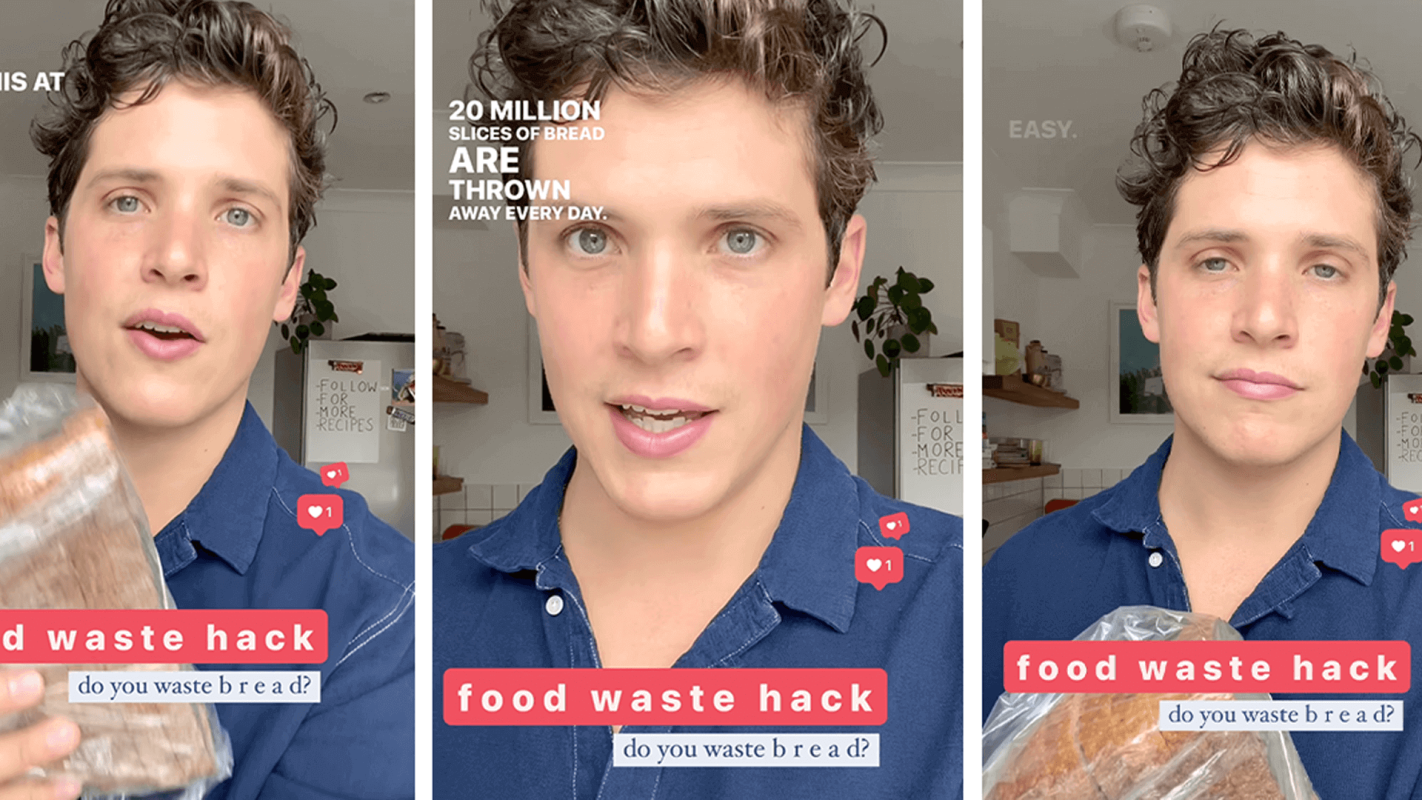It's easy to buy more bread than you eat. But if you value freshness, it can be tough to finish a loaf of your favorite dough within its prime window of flavor and texture. And who hasn't walked through the grocery store and thought, "one more loaf, just to be safe"?
Luckily, you don't have to over-purchase bread to maintain your access to fresh, grainy goodness. In a recent Instagram Reel, chef Max Lamanna outlines a pro tip for using all the bread you buy –– and keeping it fresh in the process.
In the video, Lamanna gives his simple advice for reducing bread waste.
"I pre-slice my bread. I place it back into the bag and I place the bag in the freezer," he explains.
After that, he removes whatever amount of bread he needs from the frozen bag and warms it in the toaster. Voila! Long-lasting fresh bread.
If you're getting burnt out on sandwiches and toast, users in the comment section also recommend using leftover bread to make croutons, bread pudding, and breadcrumbs.
Food waste is a massive issue in the United States and worldwide. A 2010 study showed that Americans waste between 30 and 40 percent of the national food supply each year. In 2010, this amounted to 133 billion pounds of wasted food, valued at approximately $161 billion.
The EPA website puts these numbers in perspective with staggering examples.
Each year's haul of wasted food emits the same amount of harmful carbon pollution as 42 coal-fired power plants and uses the same amount of water and energy that could provide for 50 million homes.
Additionally, wasted food production uses an area of farmland equivalent to the size of California and New York combined –– imagine those two states being used exclusively for food production, then throwing all of their products in the trash!
Bread is the most wasted food group nationwide, as 38% of all bread products are thrown away each year, equivalent to over 240 million slices of bread per year.
No matter how you slice it, tips like Lamanna's give us the opportunity to reduce our personal wastefulness, all while saving money on groceries.
Join our free newsletter for easy tips to save more, waste less, and help yourself while helping the planet.








